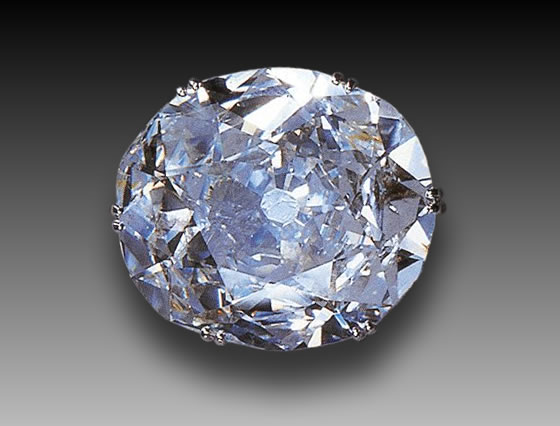The Legend of the Koh-I-Noor Diamond

Introduction to the Koh-I-Noor
India’s rich history with precious gems is legendary, and no stone captures this legacy quite like the Koh-I-Noor Diamond. For centuries, Indian rulers measured their power and prestige by their collections of dazzling jewels, often passed down through generations, gifted between allies, or seized in the chaos of battle. The Koh-I-Noor, with its storied past, stands out as perhaps the most famous of them all. Once believed to grant its owner dominion over the world, this gem has a history as brilliant - and turbulent - as its facets. To learn more about the fascinating world of diamonds, check out our comprehensive diamond guide.
Origins and Early History
The Koh-I-Noor likely originated in the Golkonda Kingdom, located in what is now Andhra Pradesh, South India. This region was a diamond-mining powerhouse, one of the few places in the world known to produce diamonds until Brazil entered the scene in 1725. Back then, the Koh-I-Noor was a jaw-dropping 793 carats - imagine a gem the size of a small egg! Today, it’s been cut down to a still-impressive 105 carats, boasting exceptional white color, clarity, and transparency. Not all diamonds are white, by the way - impurities can tint them red, blue, or even black. But the Koh-I-Noor? It’s a stunner, considered among the finest.
The Mogul Era
The diamond’s early days are shrouded in myth. Some say it was a gift from Surya, the Hindu sun god, with mentions in ancient Sanskrit texts dating back over 5,000 years. Others tie it to the Syamantaka Jewel, a mythical stone said to possess magical powers. While these stories add to its mystique, the first solid evidence of the Koh-I-Noor appears in the memoirs of Babur, founder of the Mogul Empire. He noted it among the treasures of Ala-ud-deen (yes, the Aladdin of folklore fame) after a battle in Malwah in 1304 AD. By 1526, the Moguls had it in their grasp, but a clumsy jeweler named Borgio botched a recut, slashing its weight to 186 carats and earning himself a harsh punishment. For another tale of a storied gem from this era, read about the legendary Agra Diamond.
The Persian Conquest and the Turban Trick
In 1739, the Persian leader Nadir Shah invaded India and outsmarted the Mogul Emperor Muhammed Shah with a clever ruse. Muhammed hid the Koh-I-Noor in his turban, but a tip from a harem member gave Nadir the upper hand. During a celebratory exchange of turbans - a gesture of peace - Nadir snagged the gem. When he saw it, he reportedly exclaimed, “Koh-I-Noor!” meaning “Mountain of Light.” That’s how this iconic diamond got its name, and off it went to Persia.
A Trail of Blood and Battles
The Koh-I-Noor’s journey didn’t get any less dramatic. After Nadir Shah’s death, the diamond changed hands through a series of brutal battles. It eventually landed with Ahmed Shah, who became King of Afghanistan and saw the gem as a symbol of ultimate power. But his reign, and life, ended in more bloodshed. By 1830, the deposed Afghan ruler Shuja Shah brought the diamond back to India, offering it to Maharaja Ranjit Singh in a desperate bid to reclaim his throne. Let’s just say negotiations got heated - Ranjit Singh wasn’t above using a shoe to make his point!
The Koh-I-Noor in Britain
By 1849, the British Empire had taken control of Punjab, and the Koh-I-Noor was on its way to Britain. In 1850, the young Maharaja Duleep Singh presented it to Queen Victoria, and it became the star of the Great Exhibition in London’s Hyde Park. Prince Albert had it recut to its current 105 carats, enhancing its brilliance, and it was set in a royal tiara with over 2,000 other diamonds. Today, it resides in the British Crown Jewels, mounted in a crown made for the Queen Mother’s 1937 coronation.
Modern Disputes and the Curse
The Koh-I-Noor’s story doesn’t end with its arrival in Britain. Both India and Afghanistan claim it was taken unlawfully and demand its return. In 1997, during Queen Elizabeth’s visit to India, protests erupted over the diamond’s ownership. As recently as 2010, British Prime Minister David Cameron faced calls to return it during an interview on Indian television, but he argued it would set a risky precedent. Oh, and did we mention the curse? Legend says the Koh-I-Noor brings power but also misfortune and death to its owners - though it’s said to protect women who wear it. Whether you believe in curses or not, this gem’s bloody history makes you wonder.
Disclaimer: Claims about the Koh-I-Noor’s magical or spiritual properties, such as its supposed curse or protective powers, are based on historical myths and legends. There is no scientific evidence to support these claims, and they should be viewed as folklore rather than fact.
Frequently Asked Questions
What is the Koh-I-Noor Diamond?
The Koh-I-Noor is a historic diamond, currently weighing 105 carats, renowned for its exceptional clarity and white color. It is part of the British Crown Jewels.
Where did the Koh-I-Noor originate?
It likely originated in the Golkonda Kingdom in South India, one of the earliest known diamond-mining regions.
Why is the Koh-I-Noor controversial?
India and Afghanistan both claim the diamond was taken unlawfully during colonial conquests, leading to ongoing demands for its return to its country of origin.
Is the Koh-I-Noor really cursed?
Legend suggests the diamond brings misfortune to its owners, particularly men, but protects women. This is a myth with no scientific basis, rooted in the gem’s turbulent history.

